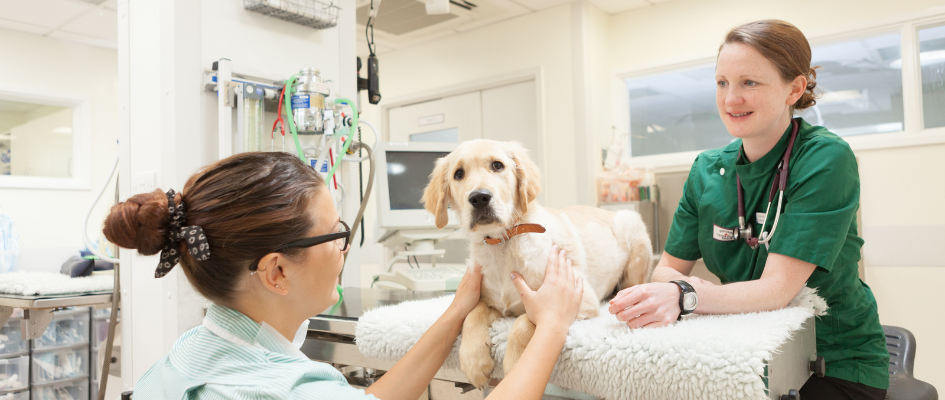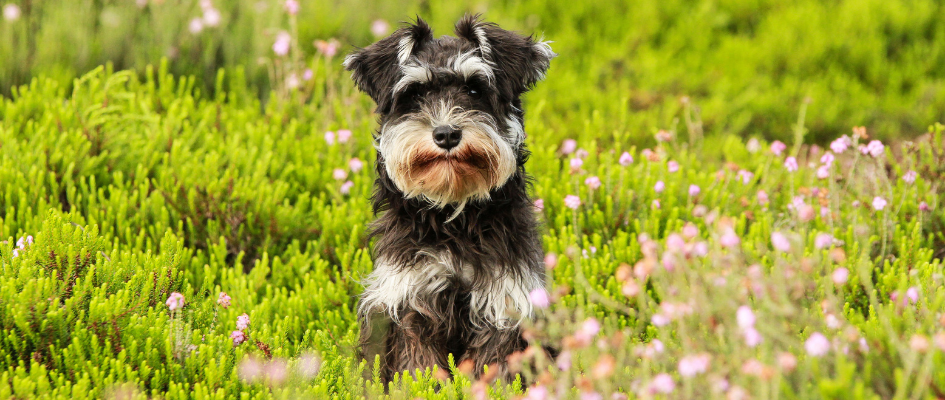Why is it important?
There are many reasons to consider neutering your female dog (spaying) and studies in the USA have shown that neutered female dogs (bitches) live longer than unneutered bitches. Neutering does come with some risks and we will discuss the advantages and disadvantages below and let you know what to expect with the surgery and the recovery from the procedure. There are a lot of people and websites who will tell you that you must have your bitch spayed, or that you mustn’t. In this guide, however, we’ll look at all the pros and cons, so that you can make your own mind up. There is also no ‘one size fits all breeds’ and we recommend discussing the procedure and the timing of it for your dog with your veterinary surgeon.
What is spaying?
Spaying a bitch is a surgical procedure performed under general anaesthetic where the ovaries (and, usually, the uterus or womb) are surgically removed. It’s a fairly big operation though young dogs tend to recover remarkably quickly from the procedure.
So, what are the advantages – why do people do it?
Advantage 1
Ending her cycles. Most bitches will come into season roughly every six months (although it may be longer for large and giant breeds) and the season usually lasts for 3 weeks. When they’re in season, or ‘in heat’, they pass a bloody discharge from their vulva, which can be really messy. In addition, every male dog in the vicinity is likely to be queuing up at your back door trying to mate with her! Some bitches also undergo quite dramatic personality changes, and they may suffer from ‘False Pregnancies’ in the couple of months following the season and even start to produce milk. If they get ‘caught’ by a dog, it’s likely to be a real pregnancy and then you have to look after and find homes for all the puppies! Spaying completely removes her cycle (it cannot occur) and she cannot become pregnant.
This means you’re not going to be part of the overpopulation problem, with dogs stacked up waiting for rehoming in shelters and rescue centres.
Advantage 2
Reducing the risk of reproductive tumours: Spaying bitches before the first or second season, or before the age of 2.5 years, may be associated with a reduced risk of developing malignant mammary tumours later in life. This reduction in risk appears to be most marked in the bitches spayed before their first season, followed by those spayed before their second season. Vaginal tumours are almost exclusively seen in unspayed female dogs over the age of 10. Ovarian tumours and uterine tumours can also occur in unspayed female dogs and are difficult to detect before they become untreatable.
Advantage 3
Eliminates the risk of Pyometra – a serious infection of the womb which, in the majority of cases, requires emergency surgery. If untreated, it is usually fatal. Two-thirds of unneutered bitches over the age of 9 will develop endometrial hyperplasia and these dogs have a higher risk of developing pyometra.
Advantage 4
Lifespan – research in the USA that looked at the health records of over 2 million pets showed that neutering had a significant effect on the lifespan of neutered bitches, with neutered dogs living on average 7 ½ months longer than unneutered bitches.

Disadvantage 1
Urinary Incontinence occurs in approximately 0.7% of dogs and the incidence is significantly higher in neutered bitches. Some breeds are more prone to urinary incontinence and there is a greater risk of developing urinary incontinence within two years of neutering if neutered before 6 months of age. Overweight dogs are at greater risk of developing incontinence. Urinary incontinence can be managed medically but will need lifelong treatment.
Disadvantage 2
Weight gain. After neutering, dogs will be more prone to put on weight. It is important to ensure they are being fed an appropriate diet and not being overfed. Obesity can increase the risk of a number of diseases including joint problems in large breed dogs and breathing problems in flat-faced breeds.
Disadvantage 3
Hormonal coat changes. A few dogs also show a change to the quality of the coat – this is actually pretty rare and usually really minor.
Disadvantage 4
Orthopaedic disease. Some large breed dogs which are prone to joint disease may have a higher risk of joint disease if neutered. This is particularly a concern with early neutering and we recommend, if you have a large breed dog, discussing the age of neutering with your veterinary surgeon.
Disadvantage 5
Risks of the surgery – a bitch spay is a very commonly performed procedure however it does come with some risk of complications. The Royal College of Veterinary Surgeons surveyed practices in 2018 and 75% of procedures were complication-free, with the majority of complications being minor and either require no intervention or some additional medication. Only 1% required further surgical intervention and there was a 0.2% rate of loss of life (compared to 0.1% in male dogs).

Age at Neutering
In most dogs, particularly small and medium-sized breeds we recommend neutering from 6 months, before their first season. With some large breeds, we may recommend waiting until they have had a season or reached skeletal maturity. This is best discussed with your veterinary surgeon.
Can I have my dog spayed when she is in season?
Unfortunately, there is an increased risk of bleeding when a bitch is in season and also of her developing a phantom pregnancy. Therefore, we need to wait 10-14 weeks after the last day of her season before performing surgery.
How is it done?
Unlike neutering a dog, which is a very simple operation (his reproductive organs are easily accessible!), spaying a bitch requires entering the abdomen. In most cases, this is done as an ‘open’ surgery, where she will have a general anaesthetic, then the surgeon will open her abdomen and remove her ovaries and uterus. There is an increased risk of bleeding internally from a bitch spay, and they can require greater post-operative monitoring. However, most dogs will be home with you on the evening of the surgery.
A female dog will need to be closely confined for the first 3 days post-surgery with no leaping, jumping or climbing stairs and lead walks only for 10 days. For a more detailed description of what to expect on the day of the surgery please see our page on neutering male dogs.
Laparoscopic Spays
An alternative to an open spay is the laparoscopic bitch spay, where we use keyhole surgery just to remove her ovaries – this has a much faster recovery time and seems to provide all the advantages of traditional surgery. We do not recommend laparoscopic spays for dogs under 5kgs or bitches that have had more than five seasons as they have an increased risk of pre-existing uterine disease which would require removal of the uterus. Laparoscopic spays are performed on a referral basis at our Veterinary Hospitals and are more expensive than a regular spay.
In conclusion…
Spaying your dog is an important decision – there are hundreds of thousands of unwanted dogs in the UK, so reproductive control is really important. It also genuinely does save lives. However, there are disadvantages too, so it’s important that you make up your own mind. If you would like to discuss this further with your vet, get in touch.
Don’t forget, ProActive Pets members, receive 20% off routine neutering!
